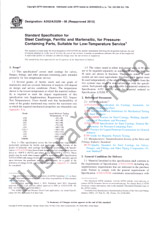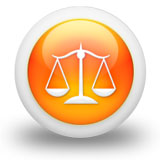Potřebujeme váš souhlas k využití jednotlivých dat, aby se vám mimo jiné mohly ukazovat informace týkající se vašich zájmů. Souhlas udělíte kliknutím na tlačítko „OK“.
ASTM F3502-23a
Standard Specification for Barrier Face Coverings (Includes all amendments And changes 3/15/2024).
Přeložit název
NORMA vydána dne 1.4.2023
Informace o normě:
Označení normy: ASTM F3502-23a
Poznámka: NEPLATNÁ
Datum vydání normy: 1.4.2023
Kód zboží: NS-1140880
Počet stran: 17
Přibližná hmotnost: 51 g (0.11 liber)
Země: Americká technická norma
Kategorie: Technické normy ASTM
Kategorie - podobné normy:
Anotace textu normy ASTM F3502-23a :
Keywords:
aerosol, airflow resistance, barrier face coverings, breathing resistance, leakage assessment, sub-micron filtration efficiency,, ICS Number Code 13.340.30 (Respiratory protective devices)
Doplňující informace
| 1. Scope |
|
1.1?This specification is intended to help ensure barrier face coverings meeting the stated requirements provide (1) a means of source control for individual wearers by reducing expelled aerosols from the wearers nose and mouth into the air; and (2) a degree of particulate filtration that potentially reduces the amount of aerosols inhaled by the wearer. Note 1:?The source control/protection provided by barrier face
coverings depends on several factors not considered in this
specification, such as material degradation from wearer challenges
including perspiration, talking, sneezing, and the length of time
the barrier face covering is worn. Further research is needed to
expand the evidence base for the protective effect of face
coverings and, in particular, to identify the combinations of
materials that maximize both their blocking and filtering
effectiveness, as well as fit, comfort, durability, and consumer
appeal.
(https://www.cdc.gov/coronavirus/2019-ncov/more/masking-science-sars-cov2.html.)
Note 2:?There are currently no established methods for
measuring outward leakage from a barrier face covering, medical
mask, or respirator. Nothing in this specification addresses or
implies a quantitative assessment of outward leakage and no claims
can be made about the degree to which a barrier face covering
reduces expired human-generated aerosols.
1.2?This specification establishes minimum design, performance (testing), labeling, user instruction, reporting and classification, and conformity assessment requirements for barrier face coverings. 1.2.1?Design criteria include setting minimum areas of face coverage over the wearers nose and mouth, prohibiting open vents or valves, requiring a means for retaining the barrier face covering on the wearers head, and providing a representation of product sizing. Manufacturers are further required to perform a design analysis for assessing leakage of exhaled air from the barrier face covering where the general approach is described in the product report. Manufacturers are permitted to conduct quantitative testing as specified in this specification to supplement the design analysis. Accessories, such as braces or other devices that allow the barrier face covering to better conform to the wearers face, are addressed as part of this specification if used for the purpose of reducing leakage. 1.2.2?Performance and testing criteria define minimum barrier face covering filtration efficiency and airflow resistance performance properties. Sub-micron particulate filtration efficiency represents the ability to capture and reduce respirable aerosols that potentially contain viruses and bacteria. Airflow resistance represents the wearers ease of breathing or breathability while wearing the barrier face covering. The impact of repeated cleaning or laundering on continued performance is applied for measuring performance properties for those barrier face coverings that are intended for reuse. Manufacturers are permitted to also provide test results for bacterial filtration efficiency (BFE) as supplemental information to the mandatory performance measurement of sub-micron particulate filtration efficiency. Note 3:?The principal performance criteria for barrier face
covering determined by testing are sub-micron particle filtration
efficiency and airflow resistance. Quantitative leakage assessment
testing is optional for information purposes and is not required.
This testing is not likely to be representative of outward leakage
from the barrier face covering and should not be claimed to
represent the amount of source control offered by the face
covering. Bacterial filtration efficiency testing is also optional
and not required. It is significantly different than sub-micron
filtration efficiency, and the results of BFE testing cannot be
interchanged or directly compared.
1.2.3?Labeling requirements specify the minimum content for labels that appear on the barrier face covering, its immediate packaging, and if different, point-of-sale packaging. 1.2.4?User instructions are required to guide selection and sizing, proper use (positioning and adjustment), and care including cleaning or laundering if product reuse is intended; inform on product cautions and limitations; and describe product replacement and disposal procedures. 1.2.5?Conformity assessment is demonstrated with a Supplier Declaration of Conformity (SDOC) following Guide F3050, Annex A3, Model A. The SDOC states that each barrier face covering labeled as compliant has met all of the requirements of this specification including design criteria, performance criteria, test methods, labeling, and user information. Additionally, conformance to this specification requires that sub-micron particulate filtration efficiency and airflow resistance tests have been performed by a laboratory accredited for conducting these tests. Note 4:?This specification does not provide for any form of
provisional, limited, or partial conformance of barrier face
coverings since their compliance with this specification is a
function of meeting all performance requirements, including
specific filtration efficiency and breathability requirements, as
well as all applicable design, labeling, reporting, and user
information requirements.
1.3?This specification addresses barrier face coverings that are either disposable or reusable. 1.4?This specification does not address the unique additional performance attributes of barrier face coverings that exist for certain applications, such as flame-resistant apparel used in environments where there are flame, high heat, electrical arc, or related hazards, but does recommend that barrier face coverings also conform to other standards as applicable. 1.5?This specification does not address the use of antimicrobial or antiviral materials, finishes, or mechanisms, nor the use of drugs, biologics, or nanoparticles in barrier face coverings. This specification also does not address the efficacy of cleaning agents or other chemicals for cleaning, disinfecting, or sanitizing barrier face coverings. Note 5:?Claims made about the use of antimicrobial materials,
finishes, or mechanisms; or the use of drugs, biologics, or
nanoparticles in any product subject the manufacturer to regulatory
oversight by government agencies, including the U.S. Food and Drug
Administration in the United States, which applies additional
safety and efficacy requirements to these products. See
5.1.2 for the requirement of
nontoxic and non-irritating materials used in the construction of
barrier face coverings.
1.6?This specification does not address requirements for medical face masks, which are covered in Specification F2100. 1.7?Nothing in this specification is intended to contradict or replace criteria that are established in 42 CFR Part 84 for air-purifying respirators or requirements for use of respirators in accordance with 29 CFR 1910.134. 1.8?Nothing in this specification is intended to imply that barrier face coverings qualify as approved respiratory protection devices or have FDA clearance for use in a healthcare setting. 1.9?Nothing in this specification is intended to imply that barrier face coverings should be placed on very young children (<2 years), anyone who has trouble breathing, or anyone who is unconscious, incapacitated, or otherwise unable to remove barrier face coverings without assistance. 1.10?The values stated in SI units or in other units shall be regarded separately as standard. The values stated in each system must be used independently of the other, without combining values in any way. Note 6:?There are several aspects that relate to the material
composition and design of barrier face coverings that are not
addressed in this specification but warrant attention relative to
their safety, health effects, and impact on the environment,
including but not limited to: leaching of potentially toxic
finishes, inhalable toxic substances from materials, and bioburden
inhibitors subject to regulatory oversight.
1.11?This standard does not purport to address all of the safety concerns, if any, associated with its use. It is the responsibility of the user of this standard to establish appropriate safety, health, and environmental practices and determine the applicability of regulatory limitations prior to use. 1.12?This international standard was developed in accordance with internationally recognized principles on standardization established in the Decision on Principles for the Development of International Standards, Guides and Recommendations issued by the World Trade Organization Technical Barriers to Trade (TBT) Committee. |
Doporučujeme:
Aktualizace zákonů
Chcete mít jistotu o platnosti užívaných předpisů?
Nabízíme Vám řešení, abyste mohli používat stále platné (aktuální) legislativní předpisy.
Chcete vědět více informací? Podívejte se na tuto stránku.




 Cookies
Cookies
